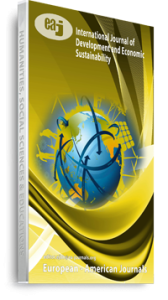The persistent US-China trade balance deficit in favour of China, which reached more than US $ 500 billion in 2018, has led to growing calls from US economists and policymakers for China to review intervention policy to devaluate its exchange rate of Renminbi against the US dollar. China tried to increase the degree of competitiveness of its exports to the USA by keeping its exchange low. In the absence of a satisfactory solution to the United States regarding the need for China to adjust its exchange rate policy, US President Donald Trump announced on March 22, 2018 his intention to impose customs duties of 50 billion US dollars on Chinese imports based on Article 301 of The Trade Act of 1974, concerning unfair trade practices and infringement of intellectual property rights which came into effect by imposing customs duties on Chinese goods equivalent to $ 50 billion on July 6, 2018.In response, China also decided to impose tariffs on 128 US imports, especially Soybean. Due to the large quantities it imports from the United States, the imposition of Chinese tariffs on them will affect US exports of soybeans on a large scale (He et al., 2019). US actions continued in this context, as the White House announced its intention to impose restrictions on Chinese investments inside the United States, and recently described US President Trump as China is manipulating the exchange rate of its currency Manipulator for commercial gains on US account.
Keywords: Implications of the US-China trade war on the export opportunities of Saudi Arabia

